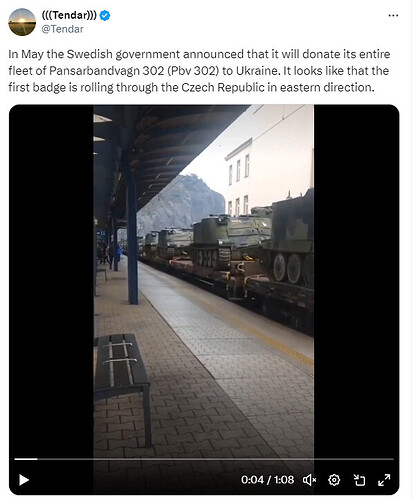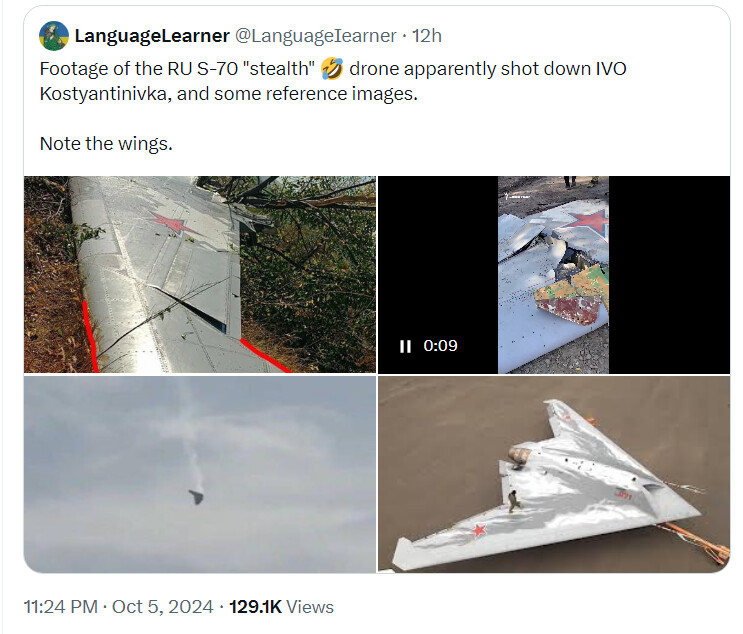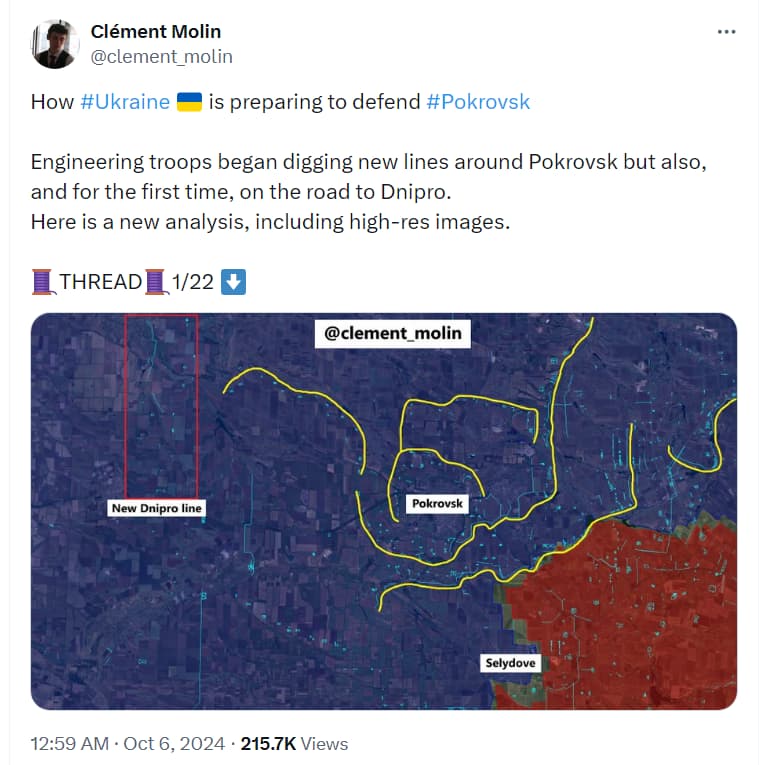Anybody else watching the show about
F-35’s? Wowsers. Unbelievable
Only two built and now one’s gone.
That’s a shame. That’s a real shame.
If all true and maybe flying in tandem like shown in the other video then there’s only 1 left now.
I call it a fake, that looks nothing like Jet Jackson’s Silver Dart!
Looks like he is a candidate for inclusion in the Book of Russian Records as the youngest tyrant’s son who got Type 2 diabetes
too bad.
so sad.
Turkey
The reference was specifically to Ukraine, not a general rule for European States .
Politically, the US may want to draw out Ukraine membership of NATO until the War is over, to avoid the consequences of a NATO member engaging in war on Russian territory.
Turkey and Norway have been longstanding members of NATO
Ukraine’s Donbas Strategy: Retreat Slowly and Maximize Russia’s Losses
The idea is to use rope-a-dope tactics, letting Russian forces pound away until they have exhausted themselves. It’s far from clear if the Ukrainian strategy will succeed.
Soldiers with an artillery battery of the 15th Brigade of the Ukrainian National Guard preparing to fire from their position in the Donbas region of Ukraine this week.Credit…Nicole Tung for The New York Times
Oct. 5, 2024
Updated 9:12 a.m. ET
Throughout the year, Ukraine has lost a series of cities, towns and villages in its eastern Donbas region to Russia, typically withdrawing its troops after hard-fought battles that sometimes lasted for months.
Marinka was the first to fall, a sign in January that Russia had regained momentum on the battlefield. Then came Avdiivka, an industrial city where Ukrainian soldiers had hunkered down in a dense maze of trenches and bunkers. Finally, this past week, Ukraine retreated from Vuhledar, a mining town perched on high ground that was a linchpin of Ukrainian defenses in the southeast.
To outside observers, Ukraine’s slow but steady retreat from the Donbas region, the main theater of the war today, may seem to signal the beginning of the endgame, with Moscow firmly gaining the upper hand on the battlefield, leveraging its overwhelming advantage in manpower and firepower.
But Ukrainian commanders and military experts dispute that, saying that a more crucial fight is unfolding in the region that goes beyond simple territorial gains and losses. It is now a war of attrition, they say, with each side trying to exhaust the other by inflicting maximum losses, hoping to break the enemy’s capacity and will to continue the war.
All summer, Russia was sending waves of troops backed by columns of armored vehicles in brutal assaults, regardless of the casualties, and saturating the skies with drones, shells and bombs.
Ukraine, a country that is a fraction of the size of Russia and with about a third of the population, is at an inherent disadvantage in this kind of battle. It has fewer men to send to the front, and, despite an influx of Western military aid, remains largely outgunned on the battlefield.
Andriy Khryshtopa, an injured civilian, was assisted by other residents after a Russian drone struck his car near Vuhledar, Ukraine, last month.Credit…Nicole Tung for The New York Times
That has left Kyiv with little choice but to adopt what Mykola Bielieskov, a military analyst at Ukraine’s government-run Institute for Strategic Studies, called a strategy of “trading space for Russian losses.” The idea is to retreat from towns under attack after exacting the highest price it can on manpower and matériel.
“It’s a matter of how much they lose before they realize it’s futile,” Oleksandr Solonko, a member of Ukraine’s 411th drone battalion, who is fighting around the frontline city of Pokrovsk, said of the Russians. But faced with relentless assaults, he added, some Ukrainian commanders also “prefer to abandon a position or a settlement if it reduces personnel losses.”
With Moscow so far proving capable of absorbing its losses by recruiting more soldiers and ramping up arms production, it remains unclear how much territory Kyiv will have to give up before the Russian Army runs out of steam — if it ever does. Compounding the situation, Ukraine’s offensive into Russia’s western Kursk region in August has further stretched its resources, threatening its ability to conduct a controlled retreat in the Donbas region without having the front line collapse.
Pasi Paroinen, a military expert from the Finland-based Black Bird Group, which analyzes footage and satellite images from the battlefield, said that after the Kursk offensive, Russia advanced in the Donbas region at a pace unseen since 2022. In the past two months, it captured some 270 square miles in the area, roughly three times the amount taken in June and July, he said.
But that leaves Russia far short of achieving its long-held objective of fully seizing the region. To do that, it would need to take another 4,000 square miles of Ukrainian territory, about five times as much as it has captured over the past year.
“This war isn’t going to be decided by who controls Vuhledar or other tactical frontline towns and cities,” said Franz-Stefan Gady, a Vienna-based military analyst. “It’s about how many troops the Russians have spent trying to seize Vuhledar versus the losses the Ukrainians have sustained in trying to hold it.”
As the Russian army has advanced, Ukrainians in the town of Novoeconomichne have been forced to flee. Credit…Nicole Tung for The New York Times
Donbas, which comprises Ukraine’s two easternmost regions, Luhansk and Donetsk, has been the focal point of this attritional battle. Its proximity to western Russia has allowed Moscow to easily funnel troops, equipment and ammunition to the front lines there. The area is scattered with numerous towns and villages, forcing both sides into grinding urban combat.
Roman, a commander who defended Vuhledar with Ukraine’s 72nd Brigade, said that when Russian forces concentrate their efforts on a specific area, they can overwhelm Ukrainian defenses. By late summer, he noted, the Russians held a 10-to-1 advantage in artillery systems around Vuhledar.
"How can one of our artillery systems fight 10 of theirs?” Roman asked, using only his first name according to military rules.
Ukrainian forces held on to Vuhledar for more than two years, destroying columns of Russian tanks in ambushes and killing many soldiers sent into brutal ground assaults. But Moscow’s army pressed on, and as it closed in on Vuhledar in recent weeks, it began inflicting substantial casualties on Kyiv’s forces. Ukrainian medics said dozens of soldiers were injured daily, and the military reported assaults that “depleted” its troops.
The army eventually announced on Wednesday that it had retreated from the town “to save personnel and military equipment.”
Doctors and medics of the 33rd Mechanized Brigade treated wounded soldiers at a stabilization point in the Pokrovsk district in eastern Ukraine last month.Credit…Nicole Tung for The New York Times
Ukraine ultimately hopes that Russia’s mounting losses will make the war unsustainable for the Kremlin before it becomes so for Kyiv. “This is the most important thing — to exhaust the enemy,” President Volodymyr Zelensky of Ukraine said in his nightly address on Wednesday.
But how realistic is this strategy? President Vladimir V. Putin of Russia has put his country’s economy on war footing and has shown no sign that he is prepared to quit the fight. And the Russian people seem steadfast in their support of the war effort.
Ukrainian and Western officials point to rising Russian casualty figures — nearly 1,200 a day in August this year, according to an adviser to the British military, Nicholas Aucott — as evidence of the war’s heavy toll on Russia.
Throughout the war, Russia has lost roughly three armored fighting vehicles for every Ukrainian one, according to Oryx, a military analysis site that counts only visually confirmed losses. Analysts from the Royal United Services Institute, a London-based military and security research organization, estimated that with the current rate of losses and the production of replacements, Russia is likely to exhaust its stocks of armored fighting vehicles by 2026.
Mr. Gady, who conducted a similar study, said Russia by then would be able to afford only “one or two battles of the scale of Avdiivka in terms of losses” of armored vehicles.
At least for now, however, the Russian Army is moving to increase its troop numbers and arms production. On the battlefield in the Donbas region, Mr. Solonko said, the Russians have been “using a lot of resources and rushing when they could be taking things slower, with fewer losses.”
Mr. Gady and other military experts said that, as summer began, Ukraine’s military was well positioned to endure the fight in the region while waiting for Russian losses to accumulate, setting itself up for possible counterattacks next year.
Volunteers and aid workers assisted evacuees from the Pokrovsk area after they arrived at a transit center in the Dnipropetrovsk region.Credit…Nicole Tung for The New York Times
Ukraine’s manpower and firepower disadvantages were starting to narrow thanks to mobilization efforts and increased ammunition supplies from Western allies, including this year’s multibillion-dollar aid package from the United States. Gen. Oleksandr Syrskyi, Ukraine’s top commander, said last month that the ratio of artillery shells usage between Russia and Ukraine had narrowed in recent months.
But Ukraine’s surprise offensive in Russia’s Kursk region in August has left its forces at greater risk, analysts said.
While the cross-border assault lifted morale in Ukraine, it also further stretched the country’s fighting resources, with some of its most experienced troops being diverted to the Kursk region from the Donbas region. Kyiv has lost more than 200 pieces of equipment in its offensive so far — nearly as much as Russian losses near the embattled city of Pokrovsk over the same period, according to Naalsio an open-source intelligence researcher and contributor to Oryx.
Ukrainian soldiers in the Donbas region have differing views on the merits of the Kursk offensive. Some believe it has forced Russia to move some Russian forces there from the eastern front, while others have expressed frustration over ammunition rationing that has occurred since the assault began.
Volia, a captain in Ukraine’s National Guard fighting near Toretsk, a city under Russian attack, said the fighting there was as brutal as ever, with both sides using every weapon possible to wear down the enemy, from old bombs carrying thousands of pounds of explosives to modern drones with night-vision capabilities.
“The Donbas,” he said, “is the field for using all means and hitting as much as one can.”
The family of Bohdan Shram, 23, during his funeral last month in Dnipro, Ukraine. While the Ukrainian forces are outmanned and outgunned by the Russians, they hope to bleed the enemy into battlefield paralysis.Credit…Nicole Tung for The New York Times
https://www.nytimes.com/2024/10/05/world/europe/ukraine-donbas-strategy-russia-war.html
Yes Minister was a great series of documentaries.
![]()
![]()
![]()
These few shots from the 23rd Engineering Positional Regiment of the Ukrainian Support Forces building dragon teeth lines in the east are quite interesting.
First, having engineering brigades is crucial for Ukraine to prepare fortified lines.
Each unit should be preparing fall back lines on their frontline perimeter.
However, if some are able to do so thanks to crowdfunding (like the one done by @Teoyaomiquu), many have to dig positions with their hands and shovels.
This is a big problem because there are many important part of the frontline where there are no fortified positions. To survive at the front, you have to dig.
Russia has done this work with great quality. When i mapped their positions last year, I saw they dug everywhere.



Then, I looked at ukrainian frontline. There were barely no trenches, only some dugouts…
They started digging a lot in january 2024, after they saw Avdiivka fell because there were no defenses in Stepove (north of the city).
Then I made a few threads on the situation of ukrainian defensive lines to understand what was their strategy.
So I mapped the 4 lines defending Pokrovsk. The situation is still +/- the same with lines 3 and 4 still holding.
On this map, you can see how there are 2 rings around Pokrovsk. The city will be an important stronghold in the south-Donetsk region.
Russians are stopped in front of the third line since a month and half, but they may soon take the trenches defending this line.
This is the reason Ukraine began preparing new defensive positions after Pokrovsk. The new line from the last days is at the border of Donetsk and Dnipro oblast.
It seems it is being dug between Mejova and Slovianska, two important cities I highlighted a few weeks ago.
I believe Ukraine will prepare the Slovyanka - Mejova - Novopavlivka line, using rivers to help.
This is also for political region, at the border between Donetsk and Dnipropetrovsk oblast, one that hasn’t been annexed by russia.
I believe engineering brigades received the order to prepare this new defensive line. We can see, (as well as russian drones can see), new trenches and anti-tank ditches.
This is from 3 weeks ago, the line is bigger now, as seen on my map.
As you may already know, I’m working with @Playfra0 on these maps.
Here is his first map with the Pokrovsk ring defenses. You can see how they are organized on top of hills. Pokrovsk is on top of one, which will help turning the city into a stronghold.
@Playfra0 also bought some images of the defensive lines east of Pokrovsk.
These images show trench network, some are well organized, some are not.
A guy that claims to have served in the serbian army in like 2007 sent an early 2000s serbian battle manual.
He told Playfra the ukrainian trenches seemed too wide. This is something, when drones are constantly flying, trenches are not enough covered and too wide.
However, there are sometimes trenches very well prepared, with a lot of firing positions, dugouts, bunkers…
But it takes time to prepare and you have to man this trench.
When russian air guided bombs are falling everydays on ukrainian positions, the best response is to dig trenches.
Here are some images from Orikhiv in the south where you can see some concrete bunkers.



Fortifications have prooved to be efficient when they are defended, when one is defending another one, when coordination between units is present.
Ukraine lost 2 lines in late august, but since 2 months, the 3rd line is holding.
Russia is now seeking to bypass Pokrovsk.
Since a few days, new trenches appeared east of Selydove, where Russia is currently advancing.
This is the most difficult direction of the front since Russia reached Tsukuryne.
On the direction north of Pokrovsk, Ukraine had the time to prepare new defenses since Russia choosed to follow the path of the railway to Pokrovsk.
This was my first map of the ukrainian defensive program.
Without these trenches, many cities (like Chasiv Yar) would have fallen, and many more soldiers would have been killed on both sides.
Here are 3 other maps from march to may 2024. Ukraine engineering troops and civilian workers are still needed to prepare and fortify positions.
This is why I believe foreign aid should help creating new engineering brigades.
This is the end of this new thread, I wish you liked it.
If you wish to support this long work (hours and hours of work to map everything), you can support me here :
CLEMENT MOLINEtudiant en 2ème année de Relations Internationales à l’ILERI Lyon, 18 ans et passionné par la géopolitique et les conflits.A l’habitude de suivre les guerres et de faire des thread dessus. → co-dhttps://buymeacoffee.com/clement.molin
You can also follow @atummundi, a think tank with students on many subjects, geopolitics, international relations, conflict monitor…
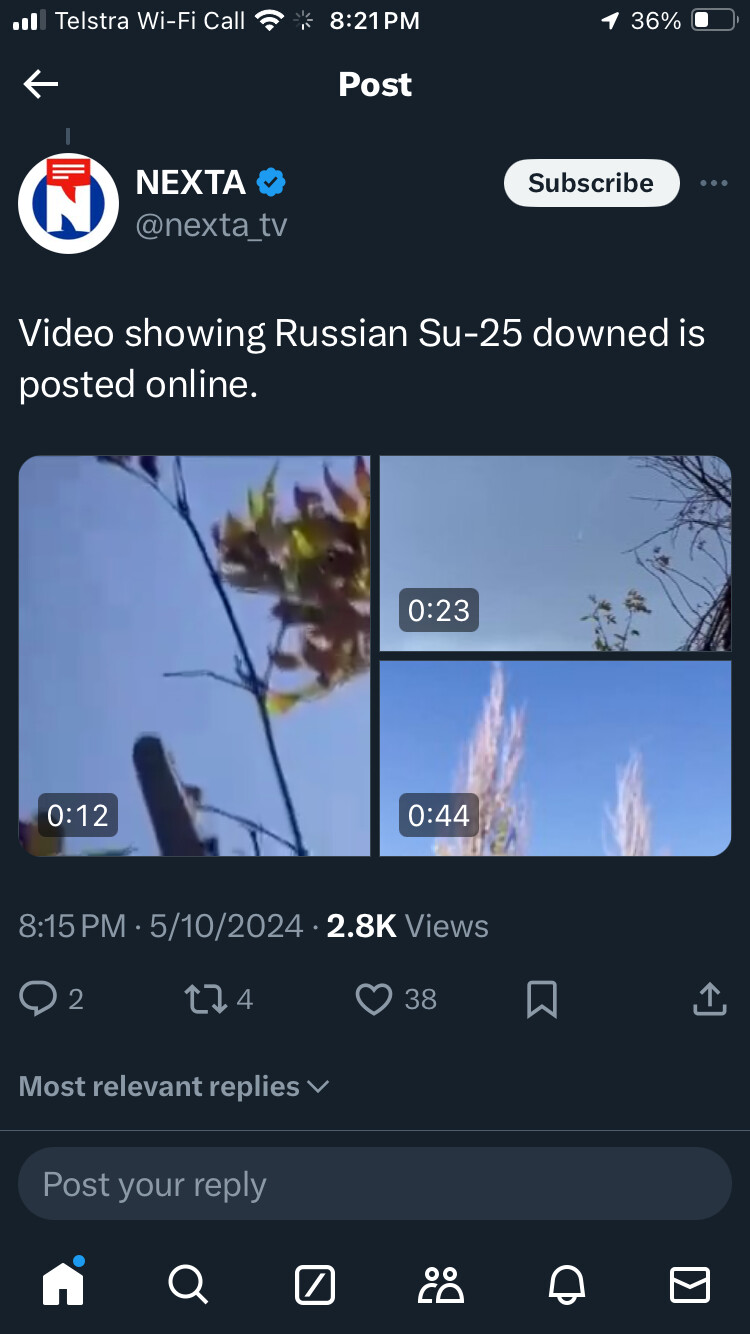
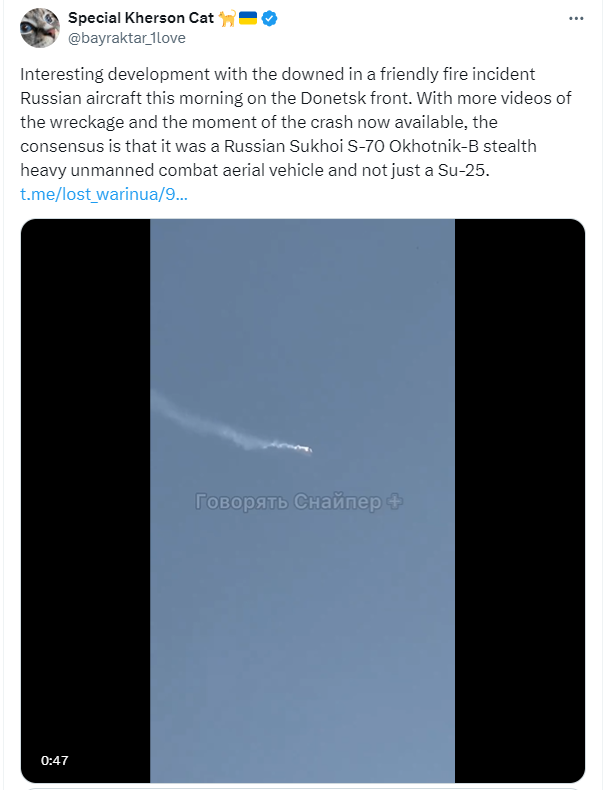
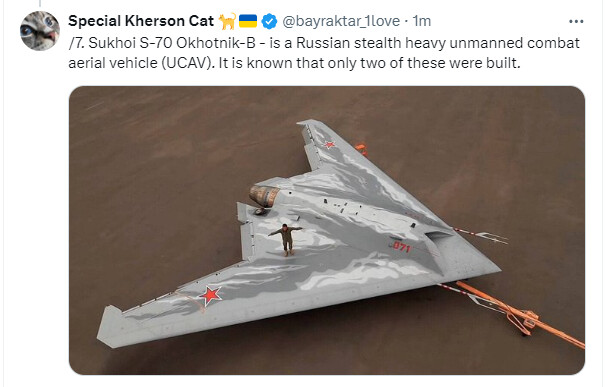


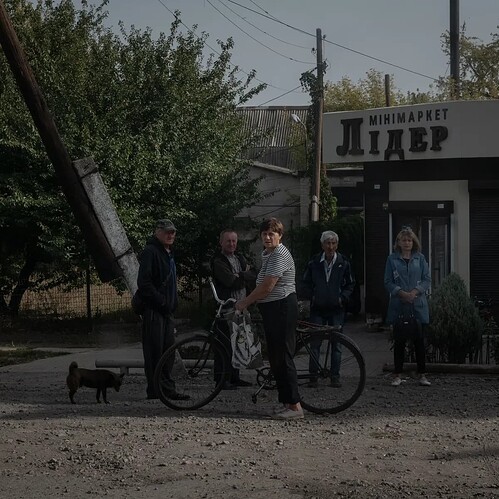



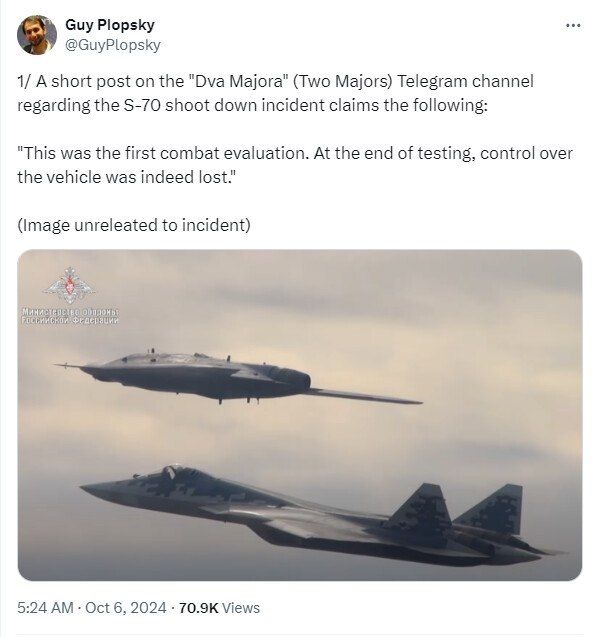
 ]
]
